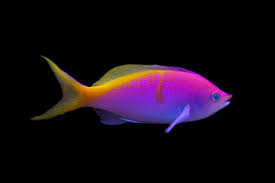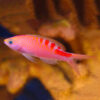Dragons and the Elements Shaping Divine Imagery in Chinese Beliefs

In Chinese culture, the dragon stands as one of the most significant and revered symbols, often associated with divine power, auspicious energy, and protection. Beyond its mythical and cultural significance, the dragon plays a central role in the realm of Chinese spiritual beliefs, where it is closely linked to the creation of divine imagery. The integration of various elements such as nature, mythology, and cosmology elevates the dragon to a status that intertwines with gods, deities, and other sacred forces in the Chinese pantheon. This article explores the relationship between the dragon and the elements that contribute to its association with divine imagery in Chinese religious practices.
The Dragon as a Symbol of Divine Power
In Chinese mythology, the dragon is far more than just a creature of legend. It is considered a symbol of divine strength, power, and protection, often seen as a bridge between the human and divine realms. As one of the “Five Auspicious Animals” in Chinese folklore, the dragon is commonly associated with emperors, gods, and celestial beings. Its divine nature is linked to the idea of cosmic balance, harmony, and universal order.
In religious contexts, dragons are seen as messengers of the heavens, bringing blessings, protection, and fortune to mortals. They are often depicted as benevolent and compassionate beings that have the ability to influence the natural world—whether by controlling weather, rivers, or the flow of prosperity. The dragon’s role as a divine force can be seen in its connection to the ancient Chinese belief that the heavens govern the natural order, and the dragon, as a representative of this power, acts as a guardian of cosmic balance.
The Elements of Nature: Water, Fire, and Earth
One of the key aspects that contribute to the dragon’s divine imagery is its deep connection to the elements of nature, particularly water, fire, and earth. In Chinese cosmology, these elements are considered foundational to the existence and balance of the universe. The dragon is often seen as a creature that controls and manipulates these natural forces, granting it divine authority over the forces of nature.
- Water: The dragon is most commonly associated with water, particularly in the form of rivers, seas, and rain. Water is a powerful symbol in Chinese philosophy, representing fluidity, abundance, and the continuous flow of life and energy (Chi). Dragons are believed to govern water sources, bring rain for crops, and regulate the flow of rivers. The divine connection between the dragon and water makes it a revered symbol of prosperity, as water is essential for sustaining life. Dragons are often invoked in prayers for rain or good harvests, as they are seen as bearers of nourishment and wealth.
- Fire: While water is the element most commonly associated with the dragon, it is also linked to fire, especially in depictions of the dragon in mythology and religious imagery. Fire symbolizes transformation, energy, and purification. The dragon’s ability to control fire emphasizes its omnipotence and divine power, reflecting its role as a force of renewal and change. In some mythologies, dragons breathe fire or possess fiery attributes that allow them to shape-shift or influence the natural world, making them guardians of both creation and destruction.
- Earth: The dragon’s connection to the earth element is often represented in its relationship to mountains and the terrain. In Chinese religious beliefs, dragons are often portrayed as dwelling in or guarding sacred mountains, such as the famous Mount Kunlun, which is considered the center of the universe in Taoist cosmology. The earth element symbolizes stability, fertility, and grounding energy. As a guardian of the earth, the dragon’s divine role is to ensure the fertility of the land, protect the soil, and maintain the natural cycles of life and death.
The Dragon as a Protector in Chinese Religion
In addition to its association with nature’s elements, the dragon also serves as a protector in Chinese religious beliefs. As a symbol of divine power, the dragon is often invoked to guard sacred spaces, such as temples, shrines, and royal palaces. It is also considered a guardian of the emperor, who was often referred to as the “Son of the Dragon.” The emperor’s connection to the dragon symbolized his divine right to rule, as the dragon’s power and authority were believed to be bestowed upon him.
Dragons are frequently depicted in religious artwork and sculpture as protecting the faithful from evil spirits, misfortune, and calamity. Their presence in temples and shrines is seen as a shield against negative forces, allowing the worshipers to be in the presence of divine protection. In Taoist temples, dragons are often carved or painted alongside other sacred symbols such as phoenixes, cranes, and tortoises—each of which represents different aspects of life, but together they create a harmonious and sacred atmosphere.
The Dragon’s Role in Taoism and Buddhism
In Taoism, the dragon represents the primal cosmic energy of the universe, often linked to the concept of “Qi” or “Chi”—the vital life force that flows through all living beings. The Taoist interpretation of the dragon emphasizes its role in preserving the balance of the universe. It embodies both the passive and active forces that sustain the natural world, reflecting the Taoist belief in harmony between opposing forces (Yin and Yang).
In Chinese Buddhism, the dragon also holds an important spiritual significance. It is believed to be a protector of the Buddhist teachings and a symbol of strength in the face of adversity. Dragons are often depicted in Buddhist art as guardians of sacred texts and as protectors of the Buddha and his disciples. The dragon’s divine role in Buddhism underscores its association with wisdom, transformation, and enlightenment. Its image in Buddhist temples and artwork serves as a reminder of the potential for spiritual growth and the protection of the Dharma (Buddhist teachings).
The Dragon’s Divine Representation in Art and Iconography
The depiction of the dragon in Chinese religious art is highly symbolic and often includes a variety of divine attributes. The dragon’s body is typically shown as a long, serpentine figure with features representing various elements, such as horns, claws, and scales. It is frequently illustrated with a pearl or orb in its mouth or claws, symbolizing wisdom, enlightenment, and spiritual power.
The dragon is also commonly shown alongside other divine beings, such as the phoenix, the tiger, and the tortoise, each of which represents different aspects of divine balance and harmony. The pairing of the dragon with the phoenix is particularly significant, as they represent the union of yin and yang energies. The dragon embodies yang—active, masculine energy—while the phoenix represents yin—passive, feminine energy. Together, these symbols create a complete and balanced spiritual system, reflecting the divine order of the cosmos.
Conclusion
The dragon’s role in Chinese religious beliefs is multifaceted and deeply intertwined with the spiritual and cosmological foundations of Chinese culture. As a divine symbol, the dragon is associated with elemental forces, protection, transformation, and cosmic order. It represents the power to govern nature, the protection of sacred spaces, and the strength to overcome adversity.
From Taoism to Buddhism, the dragon’s divine imagery continues to inspire reverence and awe. Through its connection to the elements of water, fire, and earth, the dragon embodies the forces that sustain the universe, while its role as a protector and guide in religious practices elevates it to a status of divine authority. Whether guarding sacred temples or symbolizing the balance of opposing forces, the dragon remains a central figure in the spiritual and religious landscape of China, representing divine power and the eternal flow of cosmic energy.

